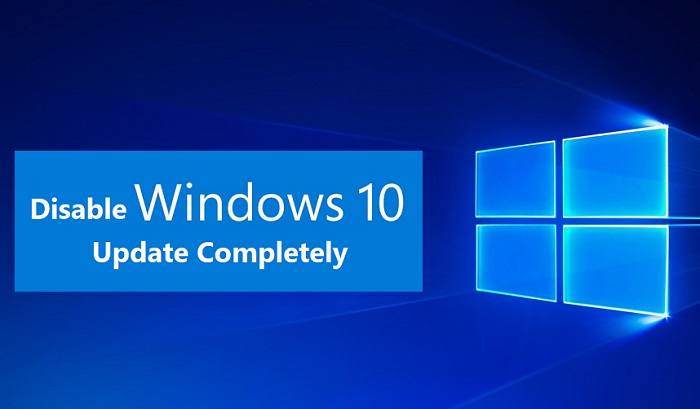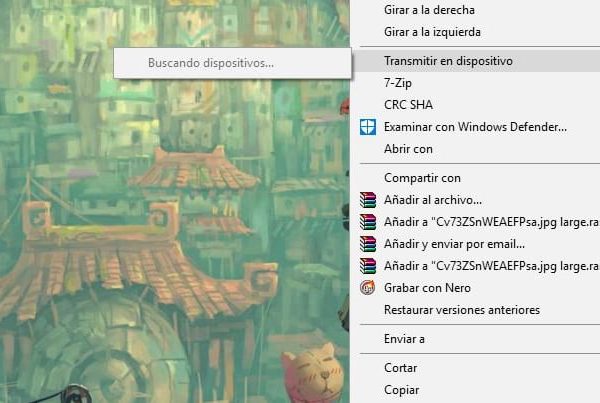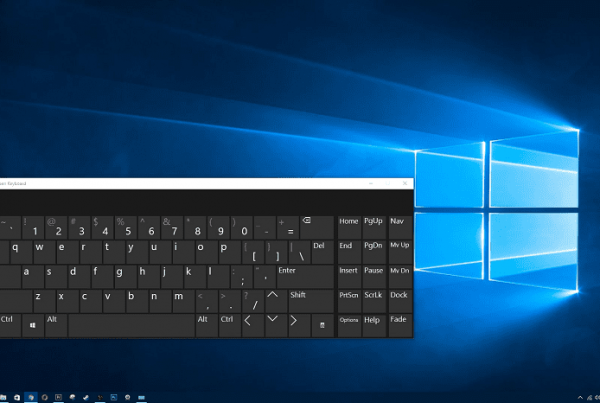Deshabilitar las actualizaciones automáticas en Windows 10: En las versiones antiguas de Windows, el Username tiene la opción de instalar o no las actualizaciones de Windows según su preferencia. Pero, la misma opción no está disponible en Windows 10. Ahora, Window 10 descarga todas las actualizaciones y las instala automáticamente. Es doloroso si estás trabajando en algo porque la ventana se ve obligada a reiniciar el ordenador para instalar las actualizaciones. Si quieres configurar la actualización automática para Window, este artículo puede ser útil. Hay algunas maneras que pueden ser útiles para configurar la actualización de Windows, las cuales discutiremos en este artículo.
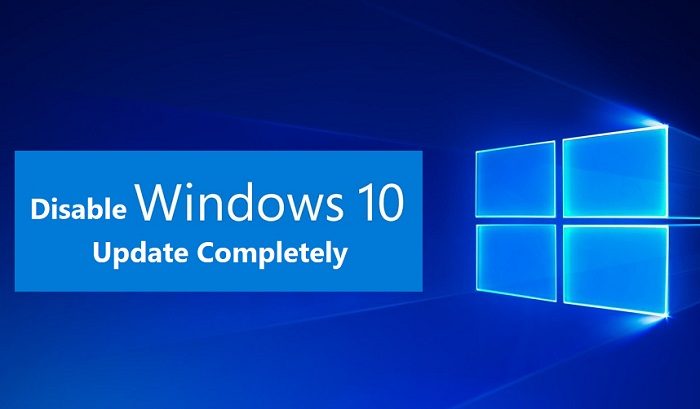
Should I disable Windows 10 updates?
Automatic Windows updates are important as it patches any security vulnerabilities that could harm your computer if your operating system is not up to date. For most users, automatic Windows updates shouldn't be a problem; instead, upgrades only make life easier for them. However, few users may have had a bad experience with Windows updates in the past, as some updates caused more problems than they fixed.
You might also consider disabling automatic Windows updates if you have a metered broadband connection, that is, if you don't have a lot of bandwidth to waste on Windows updates. Another reason to disable automatic updates in Windows 10 is that updates running in the background can sometimes consume all of your computer's resources. So, if you are doing resource-intensive work, you might face the problem of your computer freezing or crashing unexpectedly.
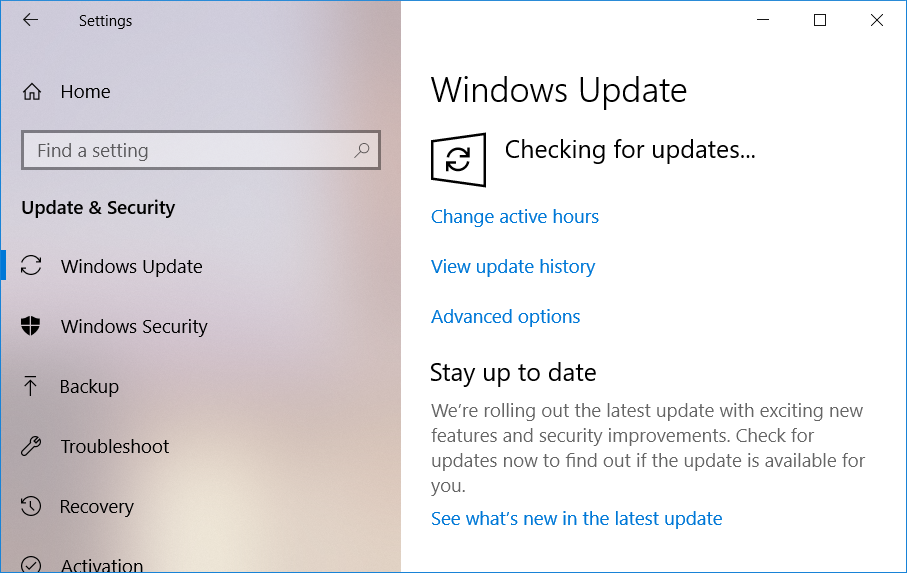
Como ves, no hay una sola razón por la que debas desactivar permanentemente las actualizaciones automáticas en Windows 10. Y todos los problemas anteriores pueden solucionarse desactivando temporalmente las actualizaciones de Windows 10 para que cualquier problema causado por estas actualizaciones be corregido por Microsoft y luego puedas volver a activar las actualizaciones.
4 ways to disable automatic updates in Windows 10
Note: Make sure to create a restore point in case something goes wrong.
There are many ways to temporarily stop or disable automatic updates for Windows 10. Also, Windows 10 has multiple versions, so some methods will work in multiple versions and some will not, so try to follow each method step by step and see if it works.
Method 1: Establish a Measurable Connection
If you are using a Wi-Fi connection, then this method can be helpful. This method is not useful for ethernet connection, since Microsoft has not provided this facility for ethernet.
There is a metered connection option in the Wi-Fi settings. The metered connection allows you to control the bandwidth of data usage, you can also restrict Windows updates. While all other security updates in Windows 10 will be allowed. You can enable this meter connection option in Windows 10 by following these steps:
1.Open Windows settings on the desktop. You can use the shortcut "Windows + I". This will open the window screen.
2.Choose the "Network and Internet" option on the setup screen.

3.Now, select the "Wi-Fi" option from the menu on the left. Then click on "Manage known networks".

4, After this, all known networks will appear on the screen. Choose your network and click "Properties". The screen will open where you can configure different network properties
5.In “Set as metered connection” enable (turn on) the toggle. Now all non-critical window updates will be restricted for the system.

Method 2: Disable the Windows Update service
We can also disable the windows update service. But, there is a downside to this method as it will disable all updates, be it regular or security updates. You can disable automatic updates in Windows 10 by following these steps:
1.Go to the Windows search bar and search for "Services".
2.Double click on "Services" and a list of different services will open. Now scroll down the list to find the "Windows Update" option.
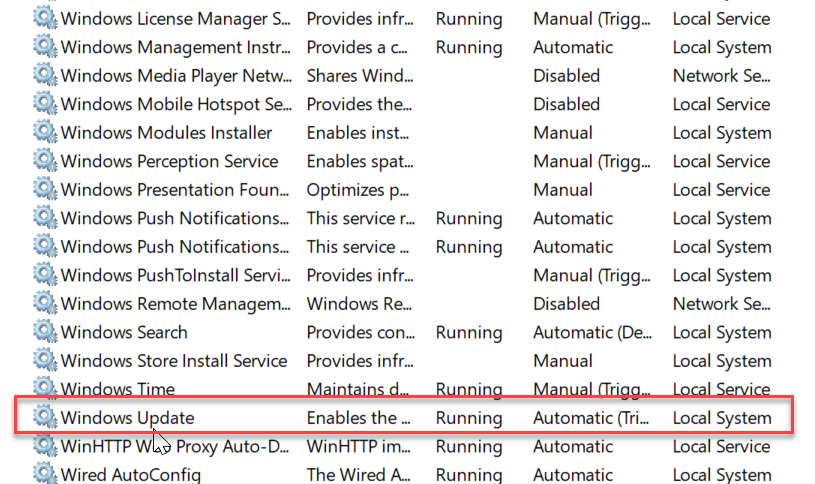
3. Right-click on "Windows Updates" and select Properties from the context menu that appears.
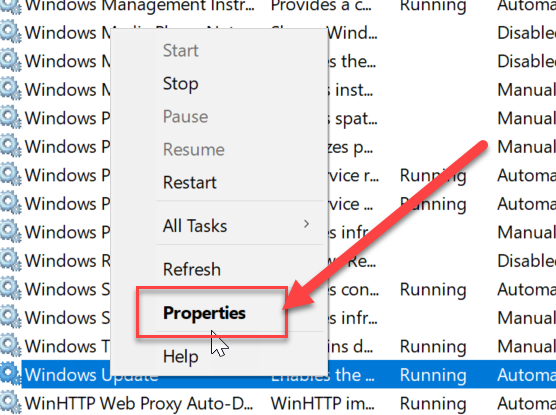
4. The properties window will open, go to the "General" tab. In this tab, in the drop-down "Startup type" choose the option "Deactivated".
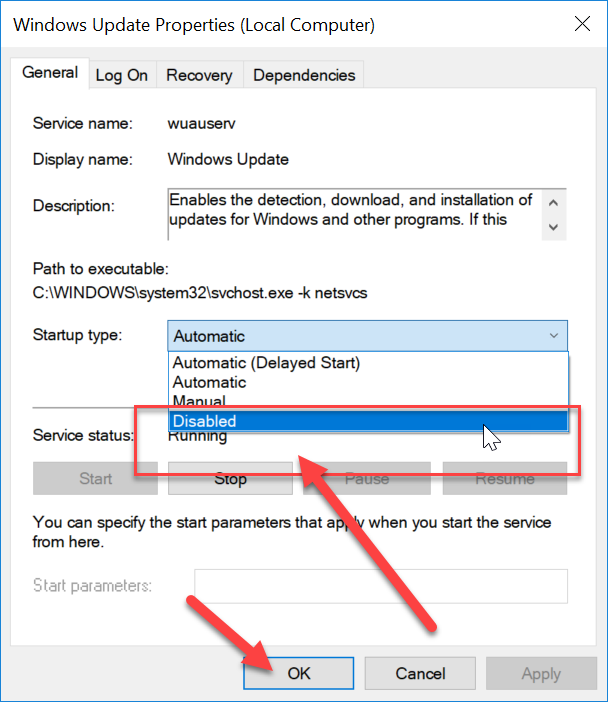
Now all Windows updates are disabled for your system. However, you should continually check that the window update is disabled for your system, especially when you restart your computer.
Method 3: disable automatic update using registry editor
In this method, we will make the changes to the registry. It is recommended to make a full backup of your PC first, if you can't then at least make a backup copy of the Windows Registry Editor, because if the changes are not made correctly it can cause permanent damage to the system. Therefore, it is better to be careful and prepare for the worst. Now, follow the next steps:
Note: If you are on Windows 10 Pro, Education or Enterprise edition, then skip this method and move on to the next one.
1.First, use the "Windows + R" shortcut key to open the Run command. 2.Now give the command "regedit" to open the registry.
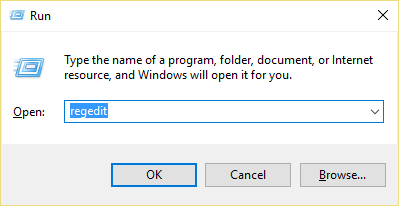
2.Navigate to the following location in Registry Editor:
HKEY_LOCAL_MACHINENPolíticaNMicrosoftNWindows
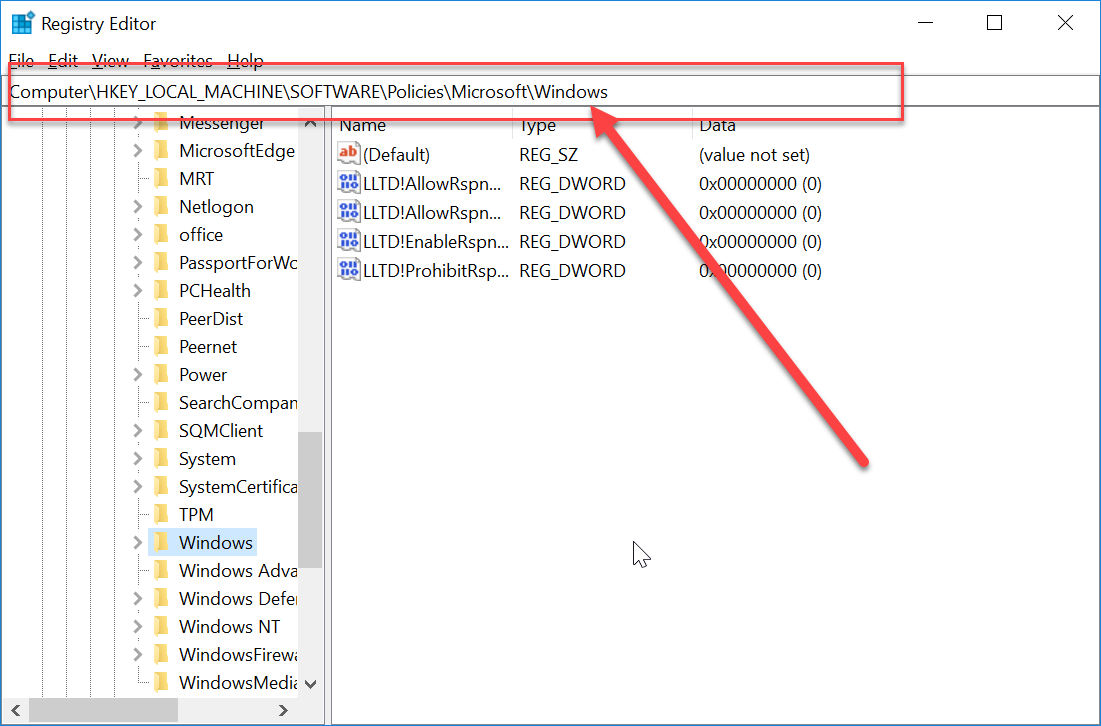
3.Right click on Windows and select "New" and then choose "Key" from the options.
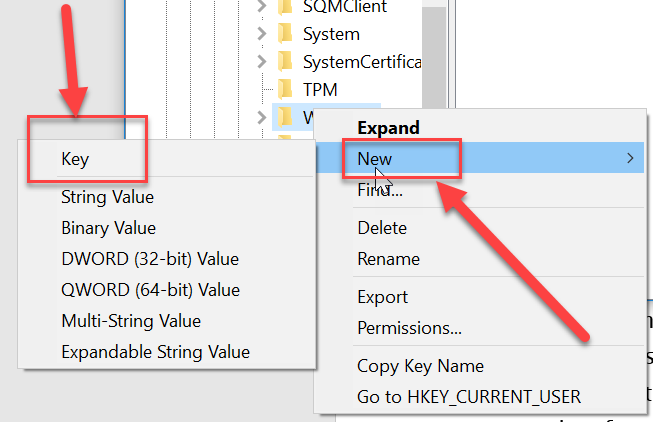
4. Enter "WindowUpdate" as the name of the key you just created.
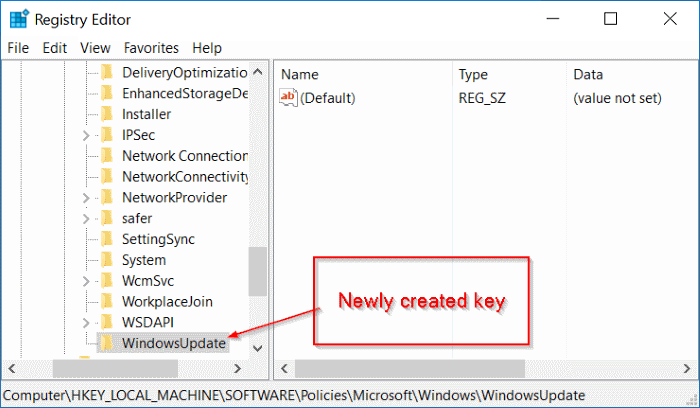
5.Now, right click on "WindowUpdate" and select "New" and choose "Key" from the list of options.
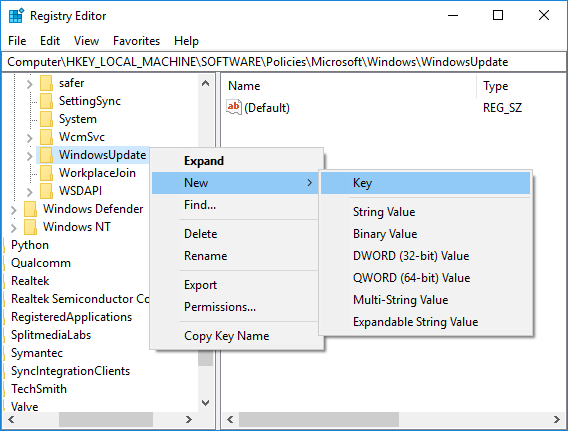
5.Name this new key "AU" and press Enter.
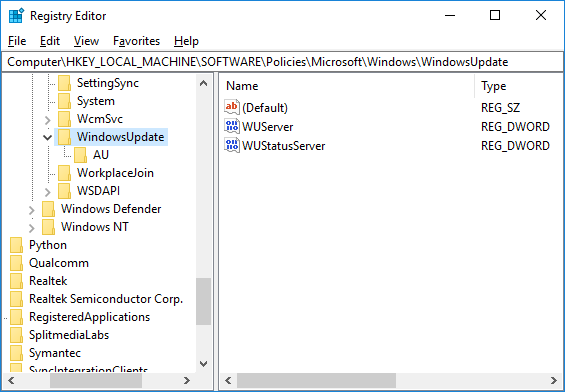
6.Now, right click on this "AU" key and select "New" and then choose "DWORD (32-bit) Value".
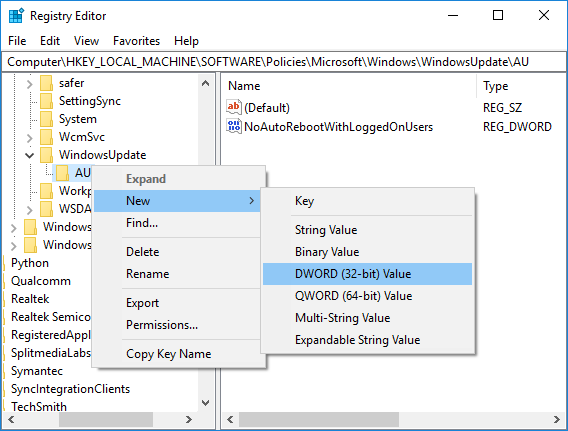
7.Name this DWORD as NoAutoUpdate and hit Enter.
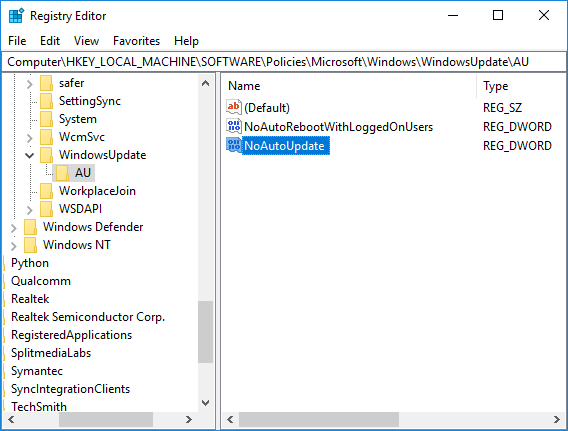
7.You must double click on this key «AU» and a popup will open. Change the data value from "0" to "1". Then press the OK button.
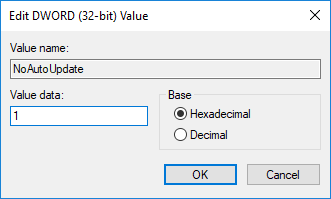
Finally, this method will completely disable Automatic Updates in Windows 10, but if you are on Windows 10 Pro, Enterprise or Education edition, you should skip this method and follow the next one.
Method 4: Disable automatic update using Group Policy Editor
You can stop the automatic update using the Group Policy Editor. You can also easily change this setting every time there is a new update, it will ask for your permission to update. You can follow these steps to change the automatic update settings:
1.Use the shortcut key «Windows key + R», it will open the run command. 2. Type the command "gpedit.msc" in execution. This will open the group policy editor.
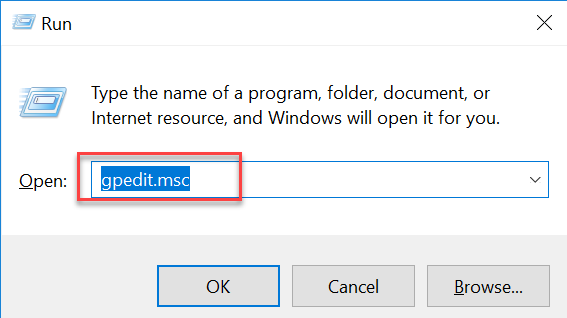
2.Navigate to the following location in the Group Policy Editor:
Computer configuration. Administrative Templates. Windows components. Windows update
.
3. Make sure to select Windows Update and then double-click on the "Configure Automatic Updates" policy in the right pane of the window.
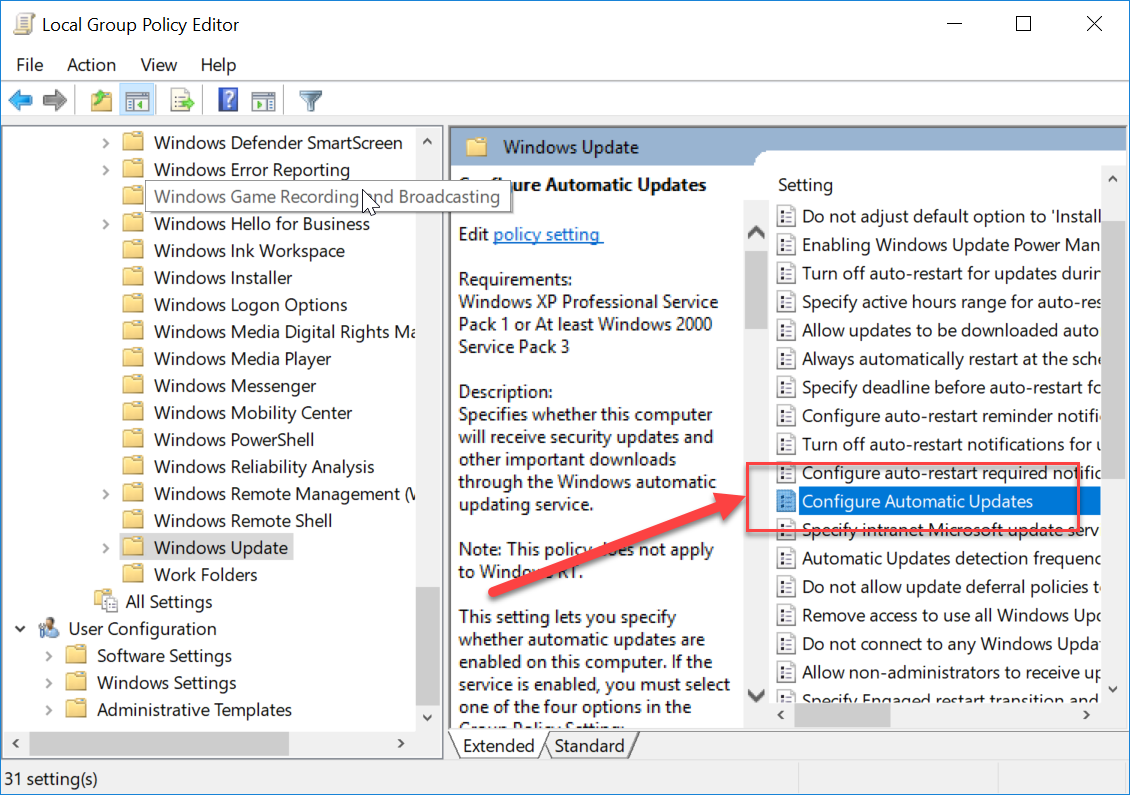
4.Tick "Enabled" to activate the "Configure Automatic Updates" policy.

Note: If you want to completely stop all Windows updates, select Disabled in the "Configure automatic updates" policy.

5.You can choose the various ways to configure automatic updates in the option category. It is recommended to choose option 2, that is, "Notify for automatic download and installation". This option completely stops any automatic updates. Now click apply and then hit ok to complete setup.
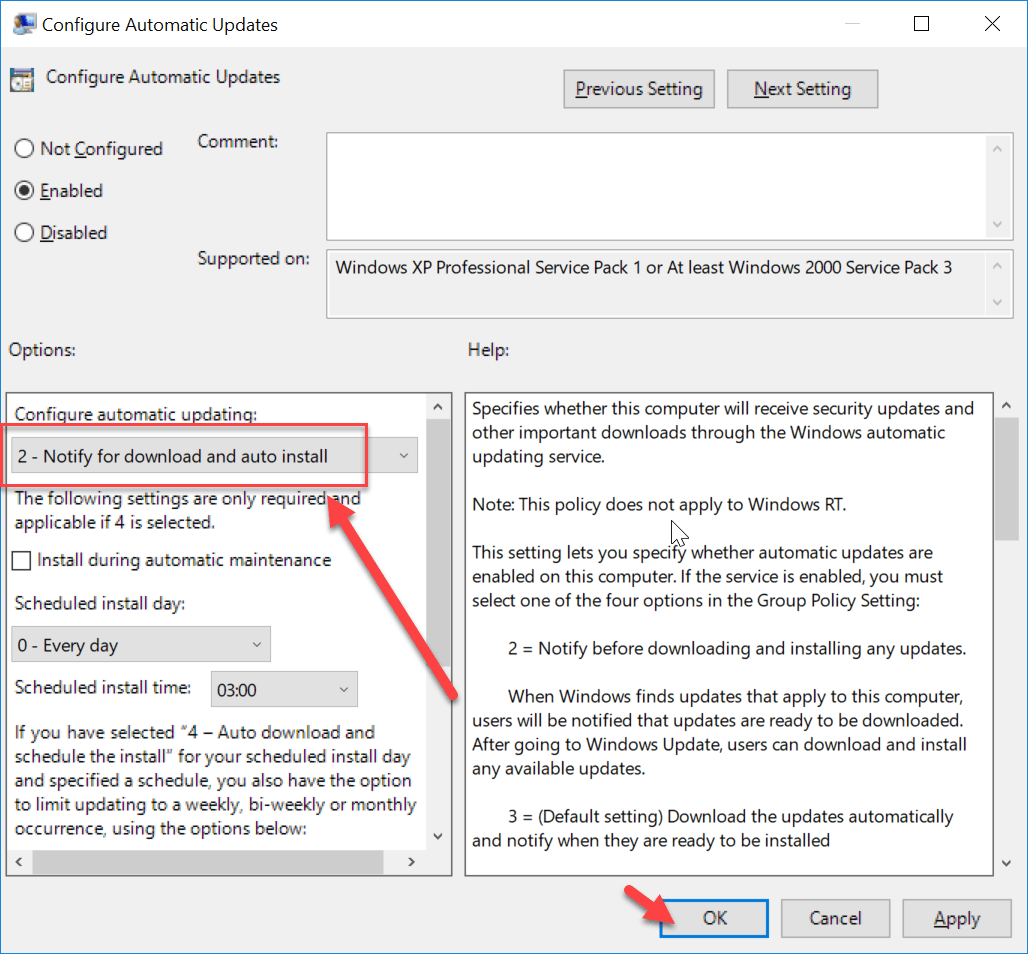
6.Now you will receive a notification every time there is a new update. You can update Windows manually through Settings -> Update & Security-> Windows Update.
These are the methods that can be used to disable automatic window refresh on the system.
I hope the steps above have been helpful and that you can now easily disable automatic updates in Windows 10, but if you still have any questions about this guide, feel free to ask them in the comment section.

